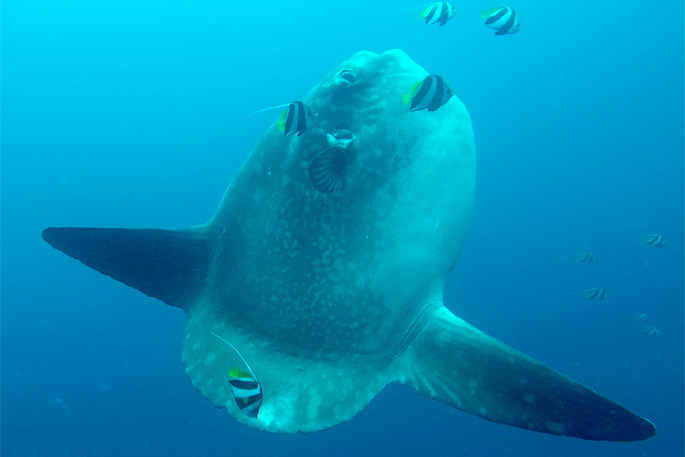A New Zealand sunfish expert and Australian museum scientists have successfully identified the tiny larva of the giant Bump-head Sunfish, vital to conserving the unique species.
The Bump-head Sunfish is one of only three Mola species found in New Zealand and Australian waters, and this breakthrough provides vital information to help scientists understand the entire life cycle of these marine giants, the heaviest known bony fishes in the world.
'This is the first time we have been able to genetically identify a Bump-head Sunfish (Mola alexandrini) larval specimen anywhere in the world," says Auckland Museum sunfish expert Dr Marianne Nyegaard.
Despite their high fecundity (300 million ova in a small female, the highest of any vertebrate), 'Given sunfishes are so incredibly fecund, it is an enigma why their eggs have never been found in the wild, and why sunfish larvae are so few and far between,” says Marianne.
The larvae were collected off the New South Wales coast in 2017, measuring approximately 5mm in length.
To add to the puzzle, larval fishes often look nothing like their adult form, making the identification particularly hard for scientists.
'Despite this, using the resources of the Australian Museum's Genomics Laboratory, we were able to conduct DNA analysis on one of the specimens which was preserved in alcohol” says Marianne.
To minimize damage to the extremely rare larval specimen, around 5 mm in length, Kerryn Parkinson from the Australia Museum's Ichthyology division painstakingly removed a single eyeball from the unidentified specimen, and Andrew King, a genomics specialist, conducted the DNA extraction and analysis.
'The DNA sequence from the existing Australia Museum specimen was compared to reference data generated by our international collaborators. Differences in the genetic code are analysed statistically to differentiate between the species. A clear match from the sequence was identified with samples from an adult Bump-head Sunfish,” says Kerryn.
'We will now be able to compare this genetically identified Mola alexandrini larvae with the exceptional collection of Mola sunfish larvae held at the Australian Museum, collected since 1925, along with CSIRO's larval Mola collection in Hobart," says Marianne.
Auckland Museum director of collections and research, David Reeves, says this research is an important lesson in the value of museum collections.
'The collections and genetic data held in museum collections can give us answers to questions about little known or rare species and provide information about their conservation and management."
Marianne adds that the importance of these larvae is one step towards the conservation of all three Mola species.
'A genetic ID of one of these larvae is incredibly important but only one step on the long journey towards describing the early ontogeny of all three Mola species - an endeavour which will require global collaboration.
'If we want to protect these marine giants, we need to understand their whole life history and that includes knowing what the larvae look like and where they occur."



0 comments
Leave a Comment
You must be logged in to make a comment.